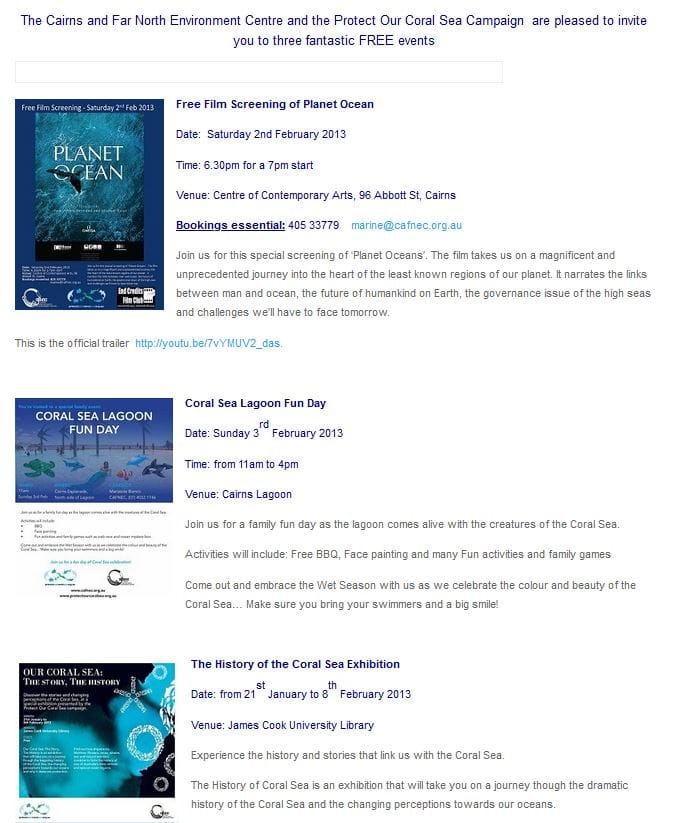The creation of the world’s largest marine reserve in the Coral Sea is the result of the combined effort of so many people. More than 100,000 Australians have had their say on the Coral Sea, and the government has listened! Since late 2012, more of the Coral Sea has been fully protected. Now, we are in the last public consultation period of the process and this is our last opportunity to have a say and ensure the best possible outcome for the Coral Sea. With nearly 1 million square kilometres of deep blue water, coral reefs, and spectacular marine life, the Coral Sea Marine Reserve is truly an incredible win for our ocean. But right now, the reserve exists only on paper, not yet on water. The draft management plan, while improving protection in the north-west of Osprey Reef, reduces the level of protection in the south-west of the reef. This change has removed protection for a very important area of high ecological significance extending from the pelagic cleaning station at ‘Around the Bend’ (south-west of The Entrance to the Osprey lagoon) to False Entrance.
This area was protected under the government’s previous publicly released map. In this final public consultation period we urge the Environment Minister Tony Burke to add the following finishing touches to the marine park:
• Restore and widen the marine national park zone from the “cleaning station” at ‘Around the Bend’ (south-west of The Entrance to Osprey Lagoon) to False Entrance, in order to protect sharks and rays and other ocean giants.
• Ensure new and adequate funding for implementation of the Coral Sea management plan.
• Provide financial assistance to the long-line fishers who are willing to stop fishing down to 22 degrees south.
• Delegate management of the Coral Sea Marine Reserve to the Great Barrier Reef Marine Park Authority to enable it to implement its world-class compliance management.
Send in a submission now to ensure that the Coral Sea Marine Reserve will be effectively managed.
The Cairns and Far North Environment Centre and the Protect Our Coral Sea Campaign are pleased to invite you to three fantastic FREE events:
• Free Film Screening of Planet Ocean
• Date: Saturday 2nd February 2013
• Time: 6.30pm for a 7pm start
• Venue: Centre of Contemporary Arts, 96 Abbott St, Cairns
• Bookings essential: 405 33779 [email protected]
Join us for this special screening of ‘Planet Oceans’. The film takes us on a magnificent and unprecedented journey into the heart of the least known regions of our planet. It narrates the links between man and ocean, the future of humankind on Earth, the governance issue of the high seas and challenges we’ll have to face tomorrow. This is the official trailer http://youtu.be/7vYMUV2_das.
Coral Sea Lagoon Fun Day
• Date: Sunday 3rd February 2013
• Time: from 11am to 4pm
• Venue: Cairns Lagoon
Join us for a family fun day as the lagoon comes alive with the creatures of the Coral Sea. Activities will include: Free BBQ, Face painting and many Fun activities and family games. Come out and embrace the Wet Season with us as we celebrate the colour and beauty of the Coral Sea… Make sure you bring your swimmers and a big smile!
The History of the Coral Sea Exhibition
• Date: from 21st January to 8th February 2013
• Venue: James Cook University Library
• Experience the history and stories that link us with the Coral Sea. The History of Coral Sea is an exhibition that will take you on a journey though the dramatic history of the Coral Sea and the changing perceptions towards our oceans. Find out how shipwrecks, Matthew Flinders, emus, whales, war and natural wonders combine to form the history of one of Australia’s most remote and special ocean regions.

